
What is it?
A minor miracle. In an age when SUVs dominate the sales charts and electrification is seen as the present and future, it’s getting harder and harder for car companies to justify sports cars. These are low volume, high cost models that typically require car makers to team up, as we’ve seen with the likes of Toyota with both its Supra (which is shared with BMW Z4) and GR 86 (shared with the Subaru BRZ). Nissan has opted to go it alone, instead drawing on its luxury sibling, Infiniti, for technical components.
Because of that, this car is a major re-work of the 370Z rather than a clean-sheet design, so it isn’t a generation leap forward from the previous car, but the simple fact it remains a part of Nissan’s line-up is worth celebrating.
READ MORE: New Nissan Z revealed
That’s not to suggest this is a ‘parts bin special’ by any stretch, and certainly the design of the car is a major step above what came before. This seventh generation Z draws design inspiration from its six predecessors but also has its own modern take to produce a car that is contemporary, stylish and desirable.
ROAD TEST: 2020 Toyota GR Supra review
The Z isn’t purely a business case for Nissan, though, it’s a genuine passion. Hiroshi Tamura, Nissan’s former head of product planning for sports cars turned ‘Brand Ambassador’, doesn’t speak about the Z in clinical, business terms but rather with a passion for the Z and the impact it has on anyone who loves cars.
Does it have any racing pedigree?
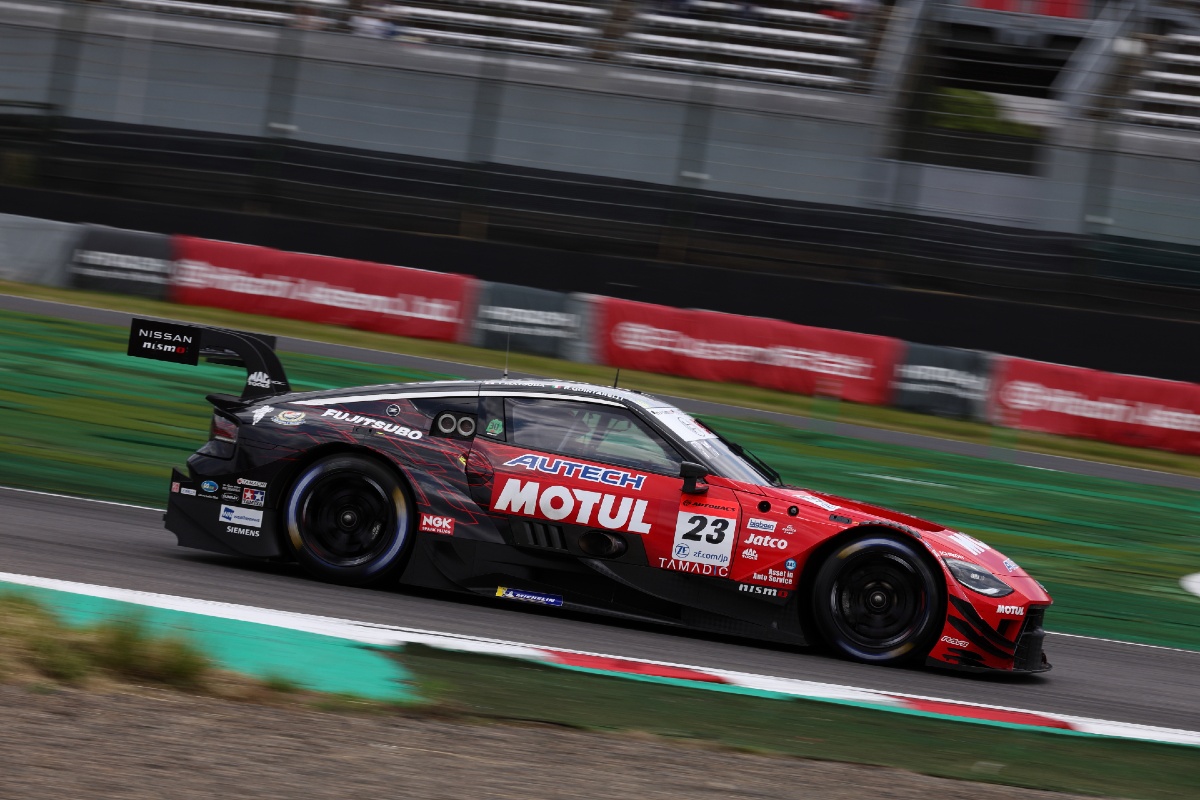
Both the brand and the model have a long history in motor racing. Throughout its long history, from the 240Z through the 300ZX and more recently the 370Z, the car has long been a favourite of grassroots motorsport enthusiasts and serious racing teams alike.
But even more than that, the Z remains an integral part of the company’s current motorsport programs. The new Z is being used as the basis for the brand’s 2022 Super GT GT500 entry, arguably the most prestigious role for any production model in the Nissan line-up.
The company even asked Super GT champion Tsugio Matsuda to help design the dashboard, giving it a similar shift light pattern to the GT500 racer.
Sadly, though, it seems unlikely that Nissan will return to Supercars competition anytime soon, despite the fact the Z would make a great addition to the incoming Gen3 era.
What’s under the bonnet?
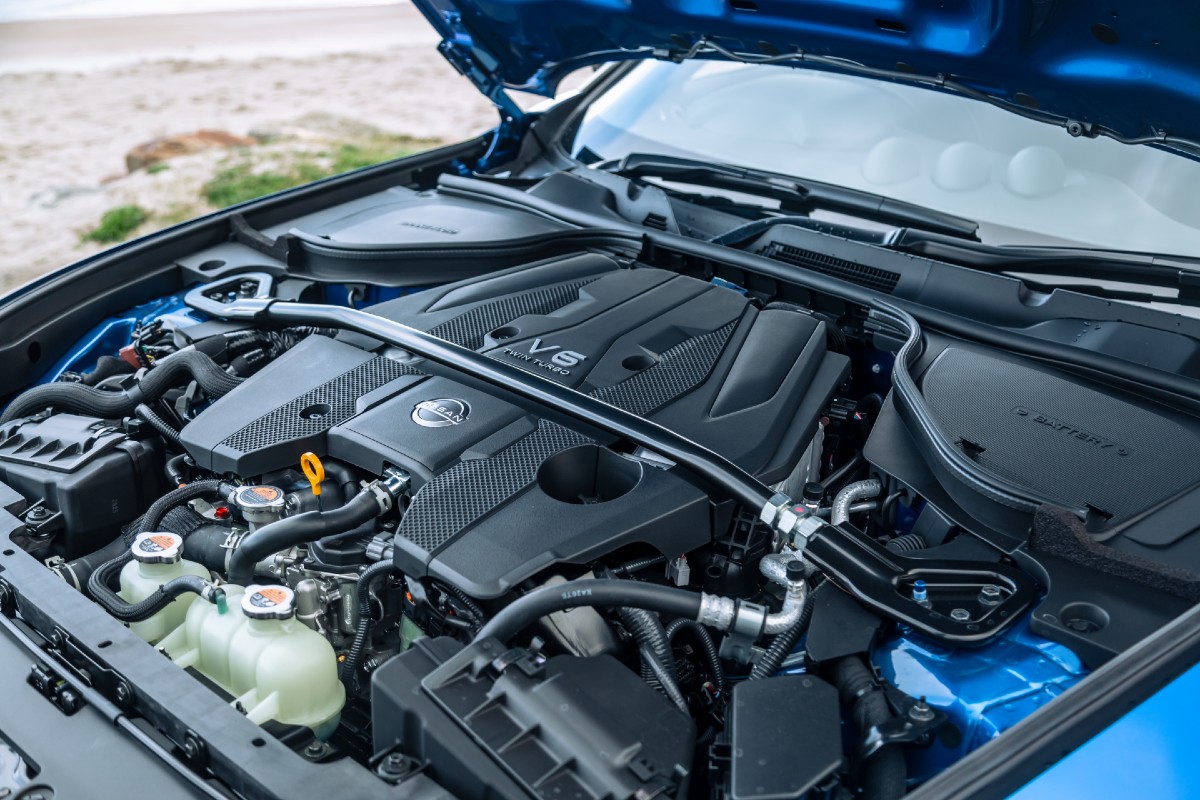
One of the biggest changes for this new Z is the engine, with the 3.7-litre V6 that powered the 370Z dropped in favour of a 3.0-litre twin-turbo V6 borrowed from Nissan’s luxury brand Infiniti.
The V6 from the old model made 245kW of power and 363Nm of torque, which was fine when it was first launched but by the end of its life it was underwhelming. Thankfully the new twin-turbo V6 steps it up, with 298kW and 475Nm, which is on par with what the Supra produces (250kW/500Nm to be precise).
Thankfully too, the engine is still available with a manual gearbox, something Tamura had to go to extreme lengths to ensure. The product chief presented a slide to Nissan’s senior management that seemingly showed the sales split between manual and automatic for the 370Z was ‘40/60’, which naturally meant the bosses didn’t want to risk losing nearly half its customer base.
What Tamura didn’t highlight was the very small disclaimer at the bottom of the slide which revealed this 40/60 split was actually for the sportier 370Z Nismo, not the standard car. He’s come clean to his boss now, but it was a big risk that paid off for Tamura and any Z driving enthusiast that loves the driving experience of a manual gearbox.
If you prefer an automatic, there’s a new nine-speed transmission available too – so both audiences are nicely covered.
This combination of the new, more powerful engine and the manual gearbox will thrill those of us left who still love an ‘old-fashioned’ sports car experience. The clutch remains heavy and the throws between gears are short and mechanical, but the engine now offers up noticeably better performance. It feels stronger at low revs but when it comes on boost it launches forward with a rush.
That’s not to say the new Z is a rocket that will go hunting European sports cars. Something Nissan effectively admits with the notable omission and heavy reluctance to admit a 0-100km/h time; despite the fact they added a launch control function. Some research suggests a 0-100km/h run should take roughly 4.6 seconds, which isn’t ludicrously quick but is hardly something to be shy about.
One element of the new engine that does underwhelm is the sound, despite some digital trickery in the system that was meant to make it sound more exciting. Instead it still sounds more gruff and laboured rather than melodic and exciting.
How does it handle?
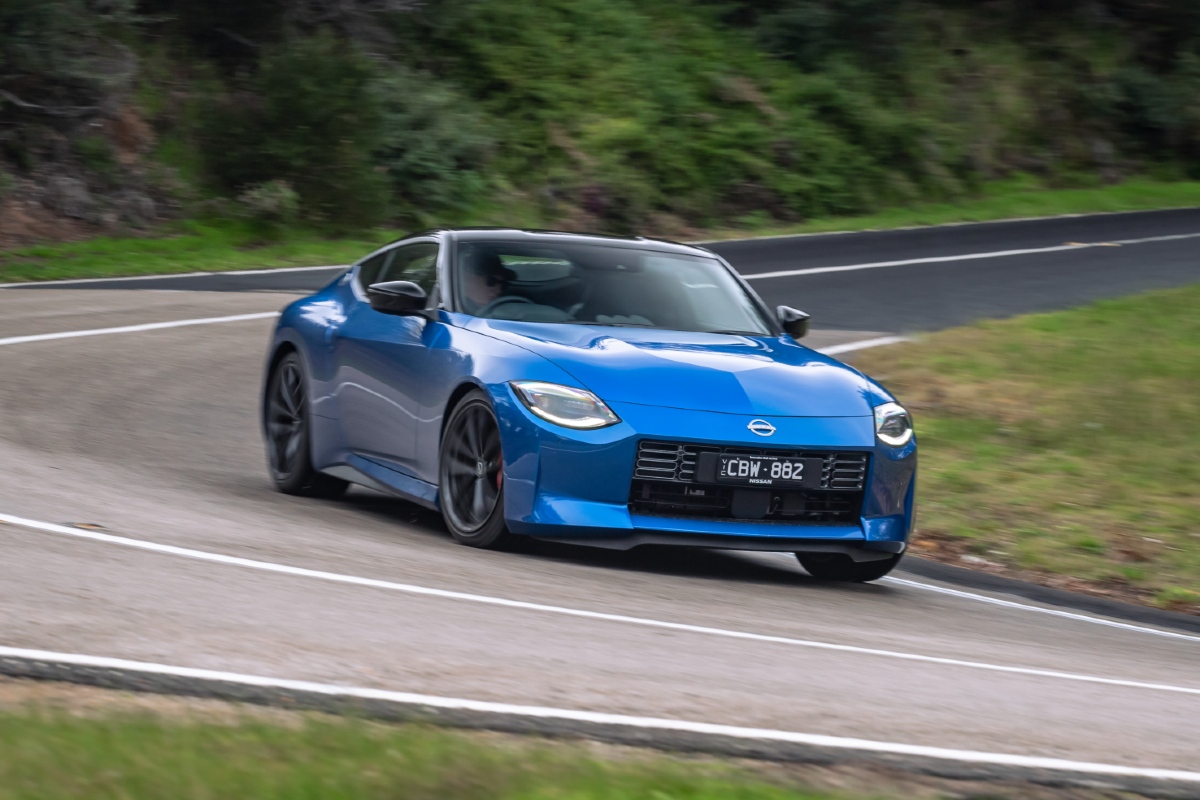
While the engine is a major change, the chassis and handling package is a case of ‘evolution rather than revolution. The chassis is largely carried over but they made it 10.8 per cent stiffer, with a particular focus on the front end, and the suspension is tweaked rather than overhauled.
So while it’s not radically changed from its predecessor, the new Z does feel a bit sharper in every aspect compared to the 370Z – and that’s a big plus.
The steering is nicely weighted and direct (thankfully Nissan opted against borrowing the Infiniti Q60’s ‘steer-by-wire’ technology that was problematic) and the grip provided by the Bridgestone Potenza S007 rubber is good.
The handling is faithful and predictable rather than spectacular, but the Z has never really been about blowing away the competition. It’s always been more about enjoying the drive and creating memories rather than setting lap records.
Where would you most like to drive it?
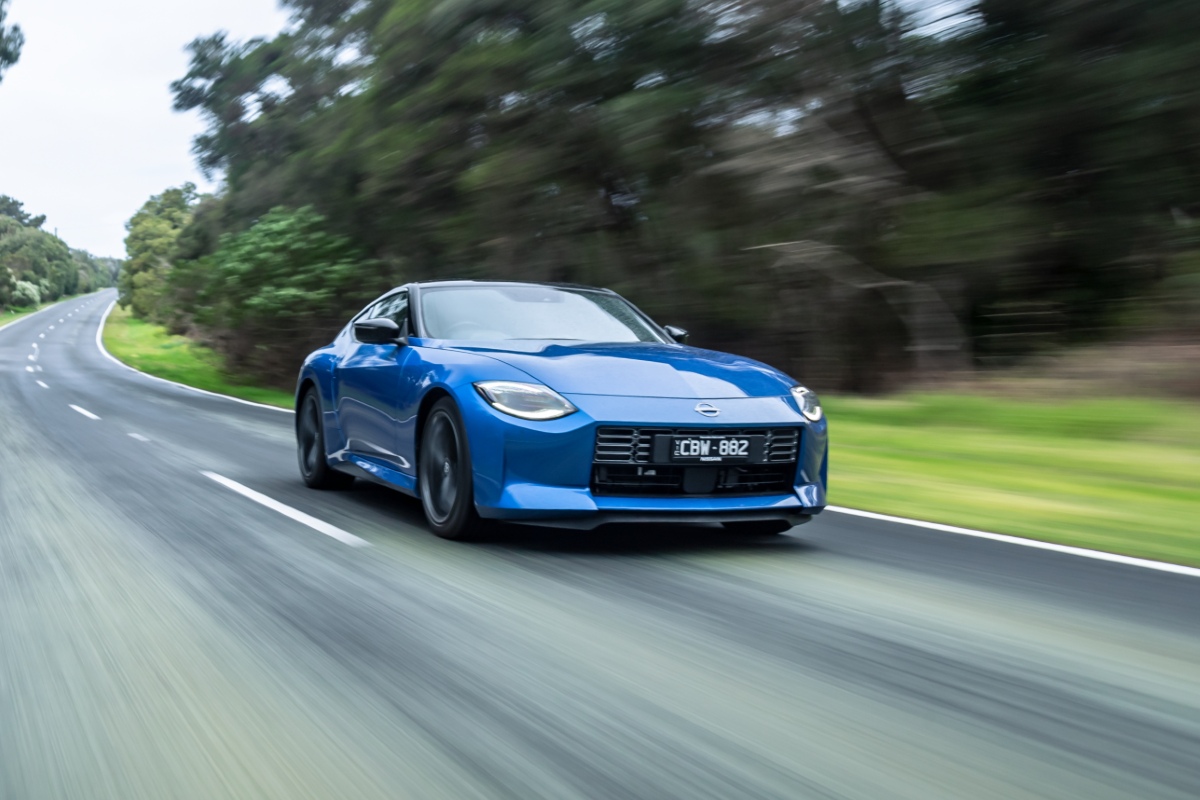
The Hakone Skyline is a toll road in Japan, about 90 minutes outside of Tokyo. It’s often called ‘Japan’s Nurburgring’ because of the way the road flows across the mountain range it runs across – rising, falling and curving with nature, rather than carving through the topography.
This feels like the kind of road the new Z was built for and hopefully one day we’ll get to experience the pair together.
What’s the interior like?
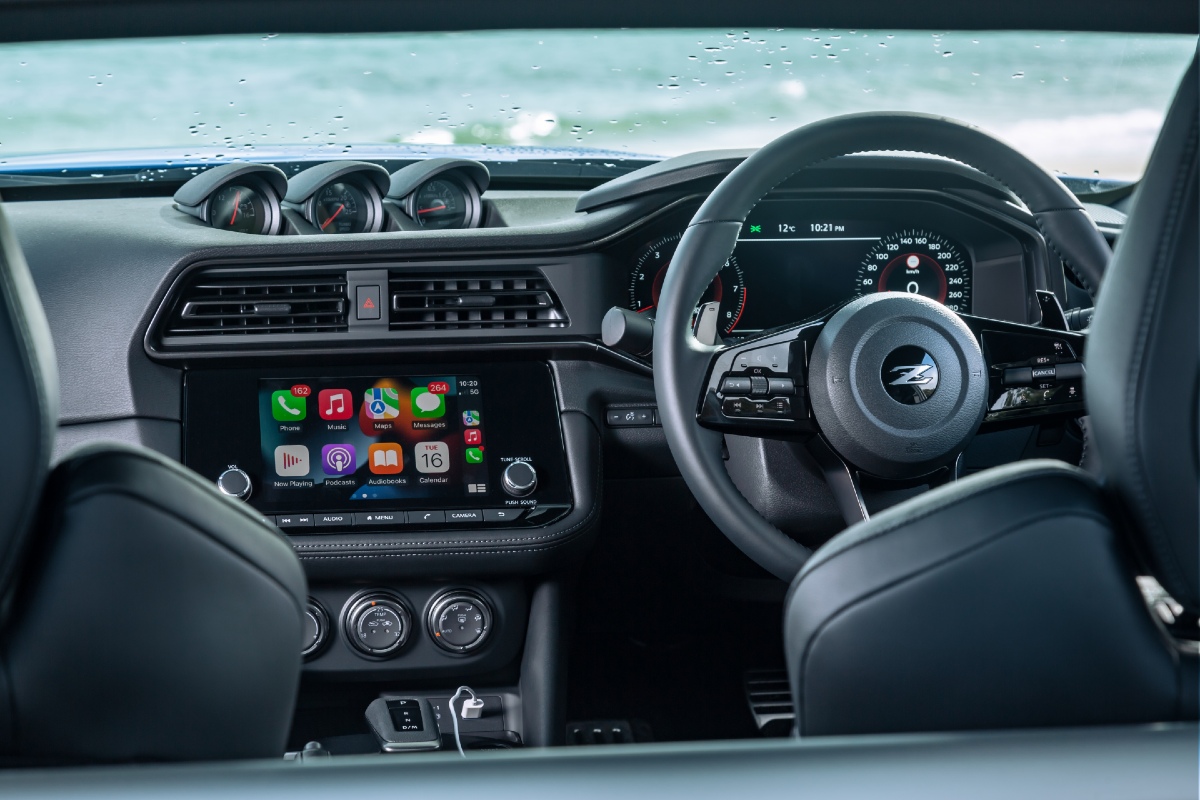
This was another area long overdue for improvement, so Nissan has given it a very significant redesign. There’s a new steering wheel, digital instrument panel and updated infotainment system that lifts the overall look and feeling of quality.
The steering wheel design is actually copied from the R32 Skyline GT-R, because Tamura bought one new in 1989 and loves the look. While the instrument cluster was heavily influenced by input from long-time Nissan Super GT driver, Tsugio Matsuda – who literally drew his ideal, racing-inspired display.
Nissan decided to keep the three analogue dials at the top and centre of the dashboard to retain a sporty look, but it’s unlikely anyone will really want to keep an eye on turbo speed or battery voltage.
The updated infotainment system does bring Apple CarPlay and Android Auto to the Z, but the lack of satellite navigation is a notable omission for what is ultimately an expensive car.
While practicality isn’t typically a selling-point for sports coupes, the new Z does have a limit to its appeal. The seats are comfortable but, as was the case with the 370Z, it’s strictly a two-seater.
There’s also limited luggage space, with a small, shallow and oddly-shaped storage area underneath the rear hatch – which is accessible directly from the cabin.
How much does the Nissan Z cost?
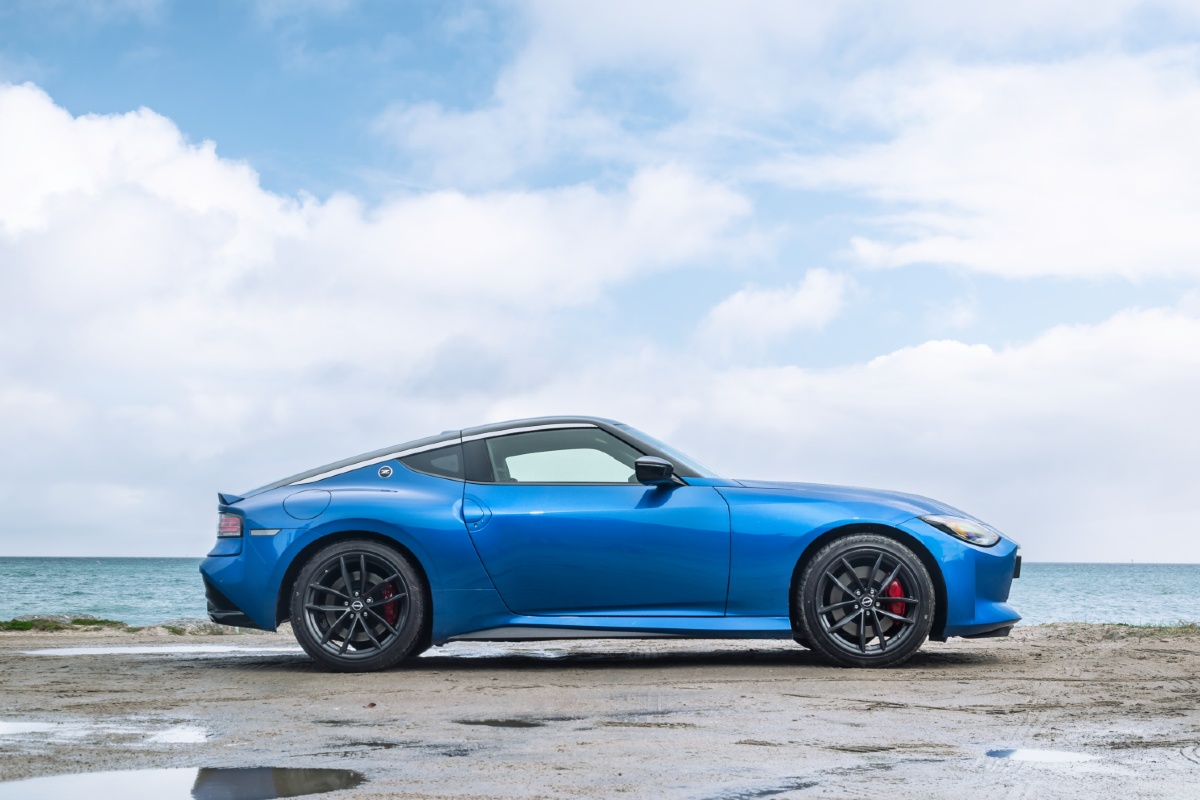
Despite saving costs by using the existing platform and borrowing an engine from Infiniti, Nissan has joined many of its competitors in introducing a new model with a significantly higher asking price than its successor.
The 370Z had a long run but spent most of its life with a list price of approximately $56,000, so the jump to this new model is steep. The Z Coupe is priced from $73,300 (plus on-road costs), which means an increase of more than $15k between old and new.
Comparatively though it’s still competitively priced, with its most obvious competitor – the Supra – starting at $86,494. The Ford Mustang GT manages to undercut it for now too, with a $65,290 asking price for the coupe.
Would I buy one?
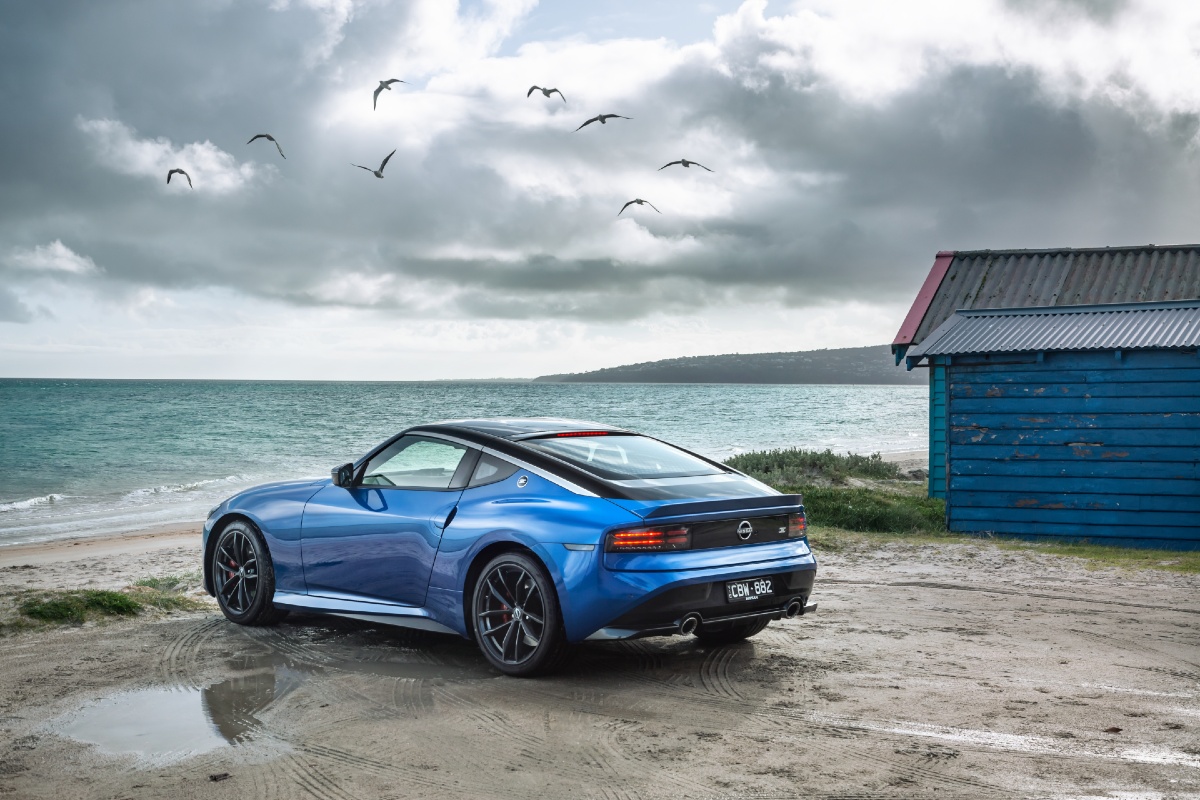
I would if I could. Nissan already has 1200 pre-orders for the Z, so there’s an orderly queue any potential customer will need to join to get their hands on it.
It’s obviously not the fastest or sharpest sports car on the planet, but the Z remains a (relatively) affordable sports coupe that has huge appeal to anyone who loves driving.
2022 Nissan Z price and specifications
| Price: | From $73,300 plus on-road costs |
| Engine: | 3.0-litre twin-turbo V6 petrol |
| Power: | 298kW at 6400rpm |
| Torque: | 475Nm at 1800rpm |
| Transmission: |
Six-speed man or nine-speed auto, rear-wheel drive
|
| Fuel use: | 10.8L/100km (man), 9.8L/100km (auto) |
| Wheels: | 19-inch alloys |
| Tyres: | 255/40 R19 (front), 275/35 R19 (rear) |
| Length: | 4380mm |
| Width: | 1845mm |
| Height: | 1315mm |
| Weight: | 1561kg |
| 0-100km/h: | 4.6 seconds (estimate) |



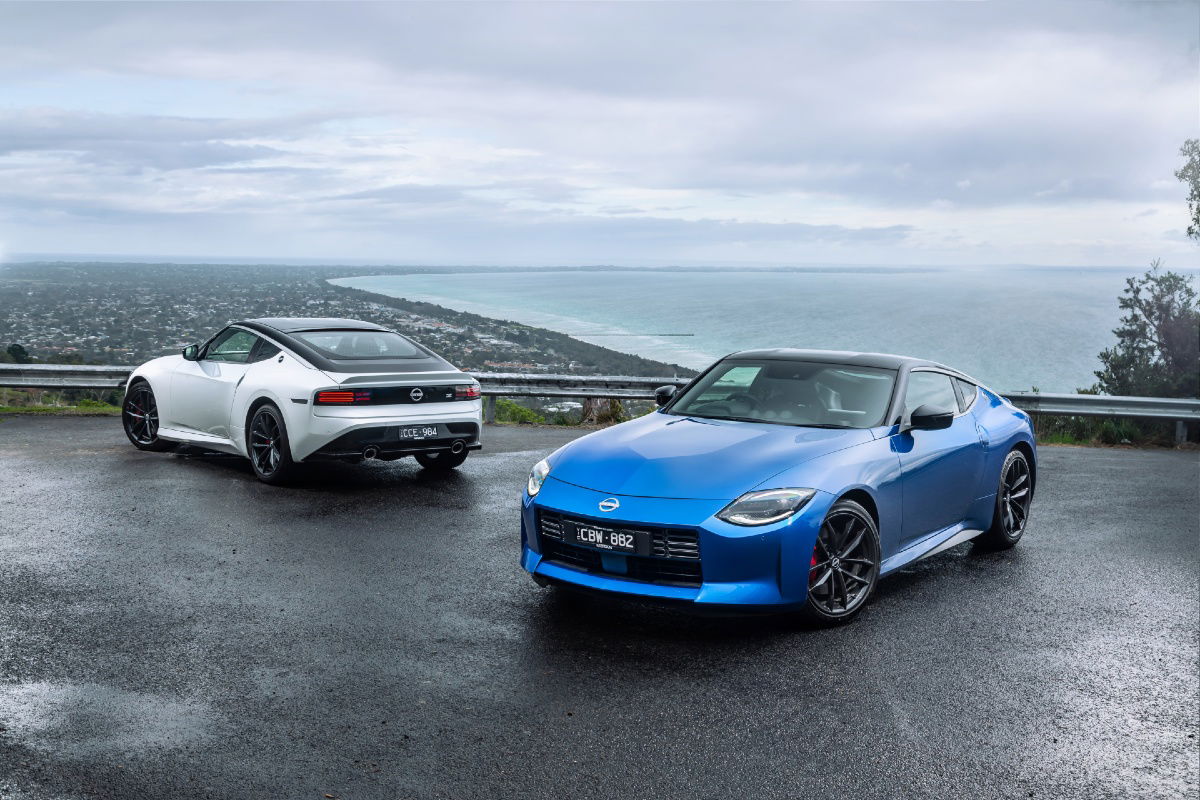










Discussion about this post